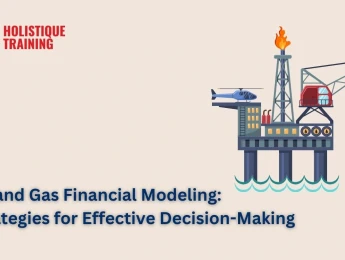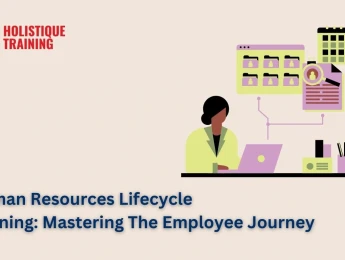Planning your workforce strategically is one of the most important aspects of ensuring any business's success. Deciding on the number of people you need to work in each role helps you plan processes and finalise systems so you don’t overspend.
Equally, you need to ensure your workforce is motivated and engaged with their tasks to complete every job to the required quality standards. This means that you can’t overload any employee with tasks either.
In recent years, automation has become a more reliable aspect of workforce planning. Now, more than ever, businesses can rely on technology to conduct some of the work that used to be carried out by people. This helps to lessen the costs of a workforce while still maintaining quality service and delivery.
On top of this, finding the right people to do each job is a task in itself. HR professionals must meticulously search for the right candidates for each role based on their knowledge and skills to ensure each task is completed correctly and promptly to push the business forward, creating a good return on workforce investment.
Upon completion of this course, participants will be able to:
- Understand the complexities of workforce planning.
- Generate stakeholder interest based on workforce implementation.
- Use accurate statistics and analytical tools to discover the right number of people covering each task.
- Consider automation and strategic planning when hiring a workforce to reduce costs.
- Understand your budget and maintain a good return on investment.
- Select the right candidates for each role to ensure quality and productivity.
- Motivate and engage your employees, maintaining a productive workforce.
- Create flexibility within a workforce and multi-skill your team.
- Collaborate and share best practices with similar businesses to move forward.
- Utilise workforce planning tools and techniques so you have the right people in the right places at all times.
- Overcome workforce planning challenges and learn from them.
This course helps anyone involved in workforce planning or the hiring process to understand the implications of improper workforce planning and work towards settling the right number of people into the right places. It would be most beneficial for:
- HR Professionals
- Operations Managers
- Hiring Managers
- Planning & Performance Managers
- Business Analysts
- Business Owners
- Managing Directors
- Recruitment Professionals
- Project Managers
This course uses various adult learning methods to help participants understand the complexity and importance of strategic workforce planning. Participants will participate in trainer-led seminars to discover workforce planning requirements and uncover challenges faced by improper planning.
They will be provided with essential tools and techniques that aid workforce planning, conduct group practical exercises to streamline their own workforce, and view presentations on the latest workforce planning systems and models to automate processes and create a future-proof planning regime.
Day 5 of each course is reserved for a Q&A session, which may occur off-site. For 10-day courses, this also applies to day 10
Section 1: Strategic Workforce Planning Importance
- The definition of workforce planning.
- The changes in workforce planning over the years.
- The new era of workforce planning.
- Your business strategy and workforce importance.
- Your roles and candidates.
Section 2: Challenges & Workforce Segmentation
- Workforce segmentation.
- Creating flexibility and multi-skilled people.
- Managing negativity and segmentation issues.
- Using the data to determine ways forward.
- Creating a range of resourcing options.
Section 3: Communication & Workforce Motivation
- Communicating change.
- Managing attrition and adherence.
- The link between workforce planning and other HR issues.
- Understanding and communicating roles and responsibilities.
- Gathering feedback and addressing concerns.
- Effective talent management processes.
Section 4: Automation of the Workforce
- Contemporary workforce planning models.
- System implementation and automation methods.
- Rotation automation to fill the gaps.
- The penalties of not being fully staffed.
- Ratio analysis and long-term planning.
- The Gap analysis processes and creates a supply and demand workforce.
Section 5: Workforce Planning Tools & Techniques
- The 6B model of organisational strategy.
- The Scatter Plot.
- Trending analysis.
- The Zero Manning Technique.
- The Demand Analysis.
- The Supply Analysis.
Section 6: Workforce Planning Implementation
- Negotiation with stakeholders.
- Moving workforce planning theory into practice.
- Finding the right people for each role.
- Creating effective job descriptions to cover every aspect.
- Candidate interviews and finding the right skills.
- Forecasting and identifying future issues.
Section 7: Review & Lessons Learned
- Thinking about the future.
- Why strategic planning sometimes fails.
- Implementing failsafe methods.
- Action Planning.
Upon successful completion of this training course, delegates will be awarded a Holistique Training Certificate of Completion. For those who attend and complete the online training course, a Holistique Training e-Certificate will be provided.
Holistique Training Certificates are accredited by the British Assessment Council (BAC) and The CPD Certification Service (CPD), and are certified under ISO 9001, ISO 21001, and ISO 29993 standards.
CPD credits for this course are granted by our Certificates and will be reflected on the Holistique Training Certificate of Completion. In accordance with the standards of The CPD Certification Service, one CPD credit is awarded per hour of course attendance. A maximum of 50 CPD credits can be claimed for any single course we currently offer.
- Course Code PH1-109
- Course Format Classroom, Online,
- Duration 5 days














